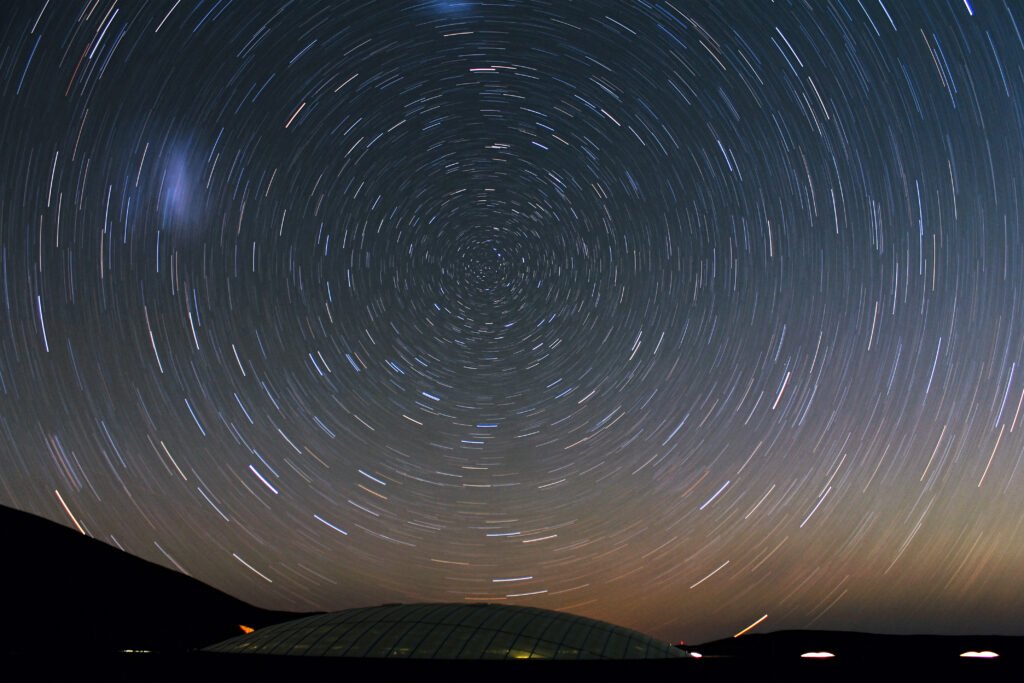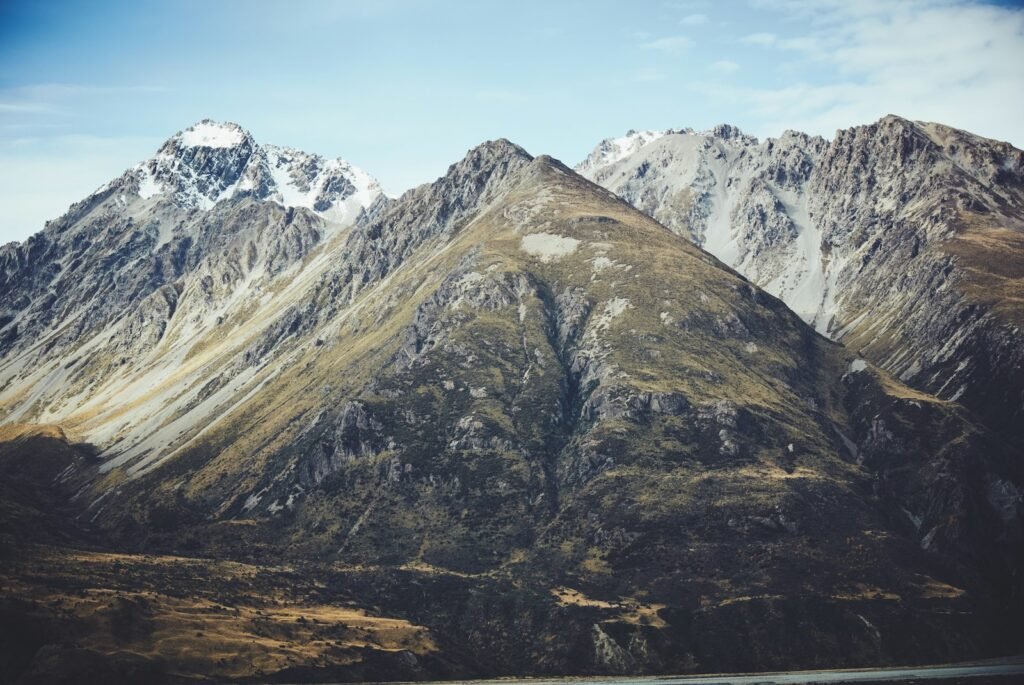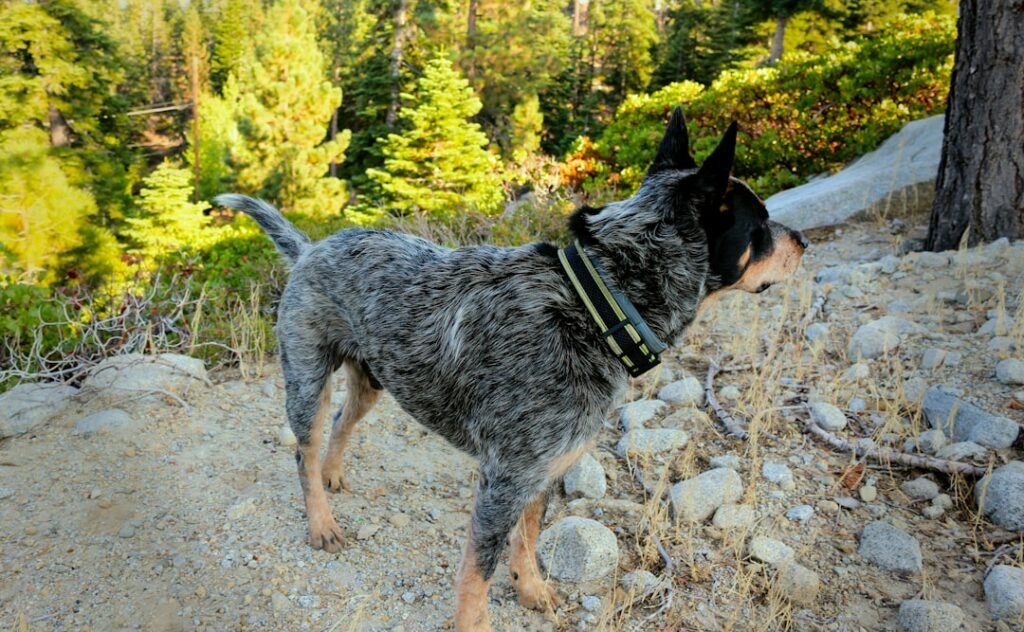The night sky holds mysteries that have captivated humanity for thousands of years, but most of us rarely see more than a handful of stars through the veil of light pollution that blankets our modern world. Imagine stepping into nature’s own observatory, where the air is thin, the atmosphere crystal clear, and the cosmos reveals itself in all its breathtaking glory. High-elevation stargazing transforms you from a casual observer into a cosmic detective, where every constellation tells a story and every meteor streak becomes a front-row seat to the universe’s most spectacular show.
Why Altitude Makes All the Difference for Astronomical Observations

When you climb higher into the mountains, you’re literally getting closer to space and farther from the atmospheric soup that muddles our view of the stars. At sea level, you’re looking through about 25 miles of dense atmosphere, but at 10,000 feet, you’ve cut that distance significantly while also escaping much of the water vapor and dust that scatters starlight. Think of it like trying to see fish in a murky pond versus a crystal-clear mountain lake. The higher you go, the less atmospheric interference stands between your eyes and the cosmic light show above. Scientists have known this for centuries, which is why many of the world’s most important observatories sit perched on remote mountaintops.
The Science Behind Dark Sky Conditions

Professional astronomers obsess over something called the Bortle Scale, which measures light pollution from Class 1 (pristine dark skies) to Class 9 (inner city). Most high-elevation wilderness areas fall into Class 1 or 2, where you can see the Milky Way’s delicate structure and count thousands of stars with the naked eye. Light pollution doesn’t just wash out faint stars – it actually changes the color balance of what you see, making the night sky appear more orange and less blue than it naturally is. When you escape to these elevated sanctuaries, you’re seeing the universe as it truly appears, with colors and details that would make any scientist’s heart race. The difference is so dramatic that many people experience what astronomers call “dark sky shock” – the overwhelming sensation of seeing the cosmos in its full glory for the first time.
Mauna Kea, Hawaii: The Crown Jewel of Stargazing

Rising 13,796 feet above the Pacific Ocean, Mauna Kea isn’t just tall – it’s arguably the best place on Earth for astronomical observations. The summit hosts thirteen world-class telescopes because the conditions here are so exceptional that even professional astronomers travel from around the globe to conduct research. What makes this dormant volcano so special is its position above the inversion layer, where trade winds create remarkably stable atmospheric conditions and humidity levels drop to almost zero. The air is so clear and steady that stars barely twinkle, appearing as sharp points of light that would make any optical engineer weep with joy. However, reaching the summit requires a four-wheel-drive vehicle and serious preparation for altitude sickness, making the visitor information station at 9,200 feet a more accessible option for most stargazers.
Mount Washington, New Hampshire: East Coast’s Alpine Observatory

At 6,288 feet, Mount Washington might not compete with western peaks in terms of raw altitude, but it offers something unique for East Coast astronomers – a genuine alpine environment with surprisingly dark skies. The weather here is notoriously fierce, with wind speeds that have broken world records, but on clear nights the viewing conditions can be absolutely spectacular. The mountain’s position above the tree line and away from major metropolitan areas creates a natural observatory where the Milky Way stretches from horizon to horizon. Scientists appreciate Mount Washington not just for its dark skies, but for its accessibility via the Mount Washington Auto Road, making it possible to drive to high-elevation stargazing without extensive hiking. The combination of eastern longitude and elevation makes it an excellent spot for observing celestial events that occur in the pre-dawn hours.
Glacier Point, Yosemite National Park: California’s Granite Observatory

Perched at 7,214 feet on a granite cliff overlooking Yosemite Valley, Glacier Point offers one of the most dramatic stargazing experiences in the continental United States. The National Park Service has worked hard to minimize light pollution throughout Yosemite, earning it recognition as a certified Dark Sky Park where the Milky Way casts shadows on moonless nights. What sets Glacier Point apart is the incredible 360-degree views with minimal obstructions – you’re literally standing on a rocky balcony suspended above one of America’s most famous valleys. The thin mountain air at this elevation means less atmospheric turbulence, so planets appear as steady disks rather than twinkling points, making it easier to spot details like Jupiter’s moons or Saturn’s rings with even modest telescopes. The granite surfaces also retain heat during the day and radiate it slowly at night, creating surprisingly stable viewing conditions.
Great Sand Dunes National Park, Colorado: High Desert Astronomy

The San Luis Valley sits at 8,200 feet elevation, making Great Sand Dunes National Park one of the highest major dune fields in North America and an unexpected gem for stargazing. The combination of high altitude, dry desert air, and minimal light pollution creates conditions that rival some of the world’s best observatories. Scientists love this location because the sand dunes themselves provide natural windbreaks that reduce atmospheric turbulence, while the surrounding Sangre de Cristo Mountains block light pollution from distant cities. The park has earned International Dark Sky Park status, meaning it meets the most rigorous standards for natural darkness and night sky protection. During summer months, the sand remains warm well into the night, creating comfortable viewing conditions where you can literally lie on nature’s own reclining chair while galaxies wheel overhead.
Cadillac Mountain, Acadia National Park: Where America Sees First Light

Standing 1,530 feet above sea level, Cadillac Mountain holds the distinction of being the first place in the United States to see sunrise for much of the year, but it’s equally impressive for stargazing. The mountain’s position on Mount Desert Island means you’re surrounded by the dark Atlantic Ocean, eliminating light pollution from three directions and creating surprisingly pristine sky conditions for such a relatively low elevation. What makes Cadillac Mountain scientifically interesting is its location at northern latitudes where you can observe celestial phenomena that remain hidden from more southern locations. The aurora borealis occasionally puts on spectacular shows here, painting the northern horizon in green and red curtains that dance between the stars. The mountain’s exposed granite summit provides 360-degree views without trees or other obstructions, making it feel like you’re standing on top of the world as you watch the cosmos rotate overhead.
Wheeler Peak, Nevada: The Loneliest Observatory

Great Basin National Park’s Wheeler Peak rises to 13,065 feet in one of the most remote and sparsely populated regions of the continental United States, creating some of the darkest skies you’ll find anywhere on Earth. The park has achieved Gold-tier International Dark Sky Park status, the highest possible rating for natural darkness, where the Milky Way is so bright it actually casts shadows on the landscape. Scientists prize this location because the extreme isolation means virtually no light pollution, while the high elevation puts you above much of the atmosphere’s water vapor and dust. The seeing conditions here are so exceptional that amateur astronomers regularly achieve results that would make professional observatories proud, capturing detailed images of galaxies and nebulae that appear almost three-dimensional against the velvet black sky. The thin air at this elevation means you’ll feel every degree of temperature drop, but the trade-off is crystalline atmospheric clarity that makes stars appear close enough to touch.
Understanding Atmospheric Transparency at High Elevations

Professional astronomers measure atmospheric quality using something called the “seeing disk” – essentially how much a star’s image spreads out due to atmospheric turbulence. At sea level, good seeing might be 2-3 arcseconds, but at high elevations with stable air masses, seeing can improve to 1 arcsecond or better, meaning stars appear as sharp pinpoints rather than fuzzy blobs. This improvement isn’t just technical jargon – it translates to dramatically better views where you can split double stars, see fine details in planetary surfaces, and observe deep-sky objects with clarity that would be impossible at lower elevations. The physics behind this improvement involves air density, temperature gradients, and something called the “scale height” of the atmosphere, which determines how quickly conditions improve as you gain altitude. Think of climbing a mountain as gradually removing layers of distortion between your eyes and the cosmos.
Essential Equipment for High-Altitude Stargazing

Stargazing at high elevations requires different gear than your typical backyard astronomy session, primarily because mountain weather can change from pleasant to life-threatening in minutes. A quality red flashlight preserves your night vision while providing enough illumination to read star charts or adjust telescope settings, but at high altitudes you’ll also need extra batteries because cold temperatures drain power faster than you’d expect. Warm clothing isn’t optional – even summer nights at 10,000 feet can drop below freezing, and there’s nothing romantic about shivering uncontrollably while trying to focus a telescope. Scientists working at high-altitude observatories always pack layers, emergency shelter, and backup power sources because mountain weather respects no one’s observing schedule. A comfortable chair or reclining pad becomes essential equipment because you’ll spend hours looking up, and neck strain can ruin an otherwise perfect night under the stars.
Best Times and Seasons for Mountain Stargazing

The calendar matters more at high elevations than anywhere else, because mountain weather can shut down stargazing for months at a time while creating absolutely spectacular conditions during peak seasons. Late spring through early fall generally offers the most accessible conditions, but each season brings different celestial highlights that make the effort worthwhile. Winter stargazing at high elevations is brutal but rewarding – the cold, dry air provides the clearest atmospheric conditions of the year, and objects like the Orion Nebula appear with detail and color that would astound you. Summer brings warmer temperatures and easier access, but also increased atmospheric moisture and the challenge of shorter nights. Professional astronomers often prefer the “shoulder seasons” of late spring and early fall, when you get the benefits of clear, dry air without the extreme cold or summer crowds that can interfere with serious observation.
How Mountain Weather Affects Astronomical Observations

Weather prediction becomes a crucial skill for high-elevation stargazing because mountain conditions can shift from perfect to impossible faster than you can pack up your equipment. Clear skies at the valley floor mean nothing if clouds are forming around the peaks, and temperature inversions can create layers of turbulent air that turn stars into dancing, twinkling messes. Scientists who work at mountain observatories spend considerable time studying meteorology because understanding pressure systems, wind patterns, and humidity levels often determines whether a night of observation will be productive or wasted. The jet stream plays a particularly important role at high elevations – when it’s positioned north of your location, you often get crystal-clear skies with steady air, but when it dips south, you can expect clouds, wind, and turbulence that make quality observations nearly impossible. Learning to read weather maps and satellite imagery becomes as important as understanding star charts when you’re serious about high-altitude astronomy.
Light Pollution and Its Impact on Scientific Observations

Light pollution isn’t just about seeing more stars – it fundamentally changes the science you can accomplish with your observations, affecting everything from color perception to the ability to detect faint celestial objects. Professional astronomers have documented how light pollution shifts the color balance of the night sky, making it appear orange-yellow instead of its natural deep blue-black, which affects photographic work and spectroscopic analysis. At truly dark high-elevation sites, you can see the airglow – a faint natural luminescence of the upper atmosphere that’s completely invisible from light-polluted locations but provides important clues about atmospheric chemistry and space weather. The contrast between light-polluted and pristine skies is so dramatic that many people experience genuine emotional reactions when they see the Milky Way for the first time, often describing it as a life-changing moment that connects them to the cosmos in ways they never expected. Scientists working in these conditions often report that the psychological impact of pristine dark skies actually improves their research focus and creativity.
Safety Considerations for High-Elevation Night Activities

Mountain environments present unique hazards that become amplified in darkness, requiring preparation and safety protocols that go far beyond typical stargazing precautions. Altitude sickness can strike anyone above 8,000 feet, causing symptoms ranging from mild headaches to life-threatening cerebral edema, and the symptoms often worsen at night when your body is trying to rest. Hypothermia represents a constant threat because mountain temperatures can drop 30-40 degrees after sunset, and wet clothing from afternoon thunderstorms can become deadly when combined with high-altitude wind chills. Professional astronomers working at high-elevation observatories always follow strict safety protocols including check-in procedures, emergency communication devices, and detailed weather monitoring because mountain rescue operations become exponentially more difficult in darkness. The combination of fatigue, altitude, and cold temperatures can impair judgment in ways that turn minor mistakes into serious emergencies, making conservative decision-making and thorough preparation essential for safe high-elevation stargazing.
Planning Your High-Elevation Stargazing Adventure

Successful high-elevation stargazing requires more logistical planning than a typical camping trip because you’re combining the challenges of mountain travel with the precision requirements of astronomical observation. Moon phases become critically important – a full moon will wash out faint deep-sky objects but provide enough light for safe nighttime navigation, while a new moon offers the darkest skies but requires artificial lighting for safety. Weather windows at high elevations are often measured in hours rather than days, so flexibility in your schedule becomes essential for catching those perfect clear nights when atmospheric conditions align with your availability. Research the specific access requirements for your chosen location because many high-elevation sites require permits, have seasonal road closures, or restrict nighttime access to protect both visitors and sensitive ecosystems. Professional astronomers often scout locations during daylight hours to identify the best observing spots, potential hazards, and escape routes before returning for nighttime observations.
The Future of High-Elevation Stargazing in America

Climate change and increasing light pollution threaten many of the pristine high-elevation stargazing sites that have served scientists and enthusiasts for generations, making current conservation efforts critically important for future generations. Rising temperatures are shifting weather patterns in mountain regions, potentially affecting the stable atmospheric conditions that make high-elevation sites so valuable for astronomical observations. The International Dark-Sky Association works tirelessly to protect existing dark sky areas while advocating for responsible lighting practices that minimize light pollution’s spread into previously pristine regions. New technologies like adaptive optics and digital imaging are changing how both professional and amateur astronomers approach high-elevation observations, potentially making these remote locations even more valuable for cutting-edge research. The growing popularity of astrotourism brings both opportunities and challenges – increased public interest in astronomy education and conservation funding, but also potential overcrowding and light pollution from visitor facilities that could compromise the very darkness that makes these locations special.
Standing beneath a canopy of stars at 10,000 feet, breathing thin mountain air while the Milky Way blazes overhead in all its glory, you’re not just stargazing – you’re participating in humanity’s oldest science. These high-elevation sanctuaries offer more than just better views; they provide a direct connection to the cosmic perspective that has driven scientific discovery for centuries. Whether you’re tracking satellites, photographing nebulae, or simply lying on your back counting meteors, these mountain observatories transform casual curiosity into genuine scientific wonder. What discoveries await you in the crystal-clear darkness above the clouds?




